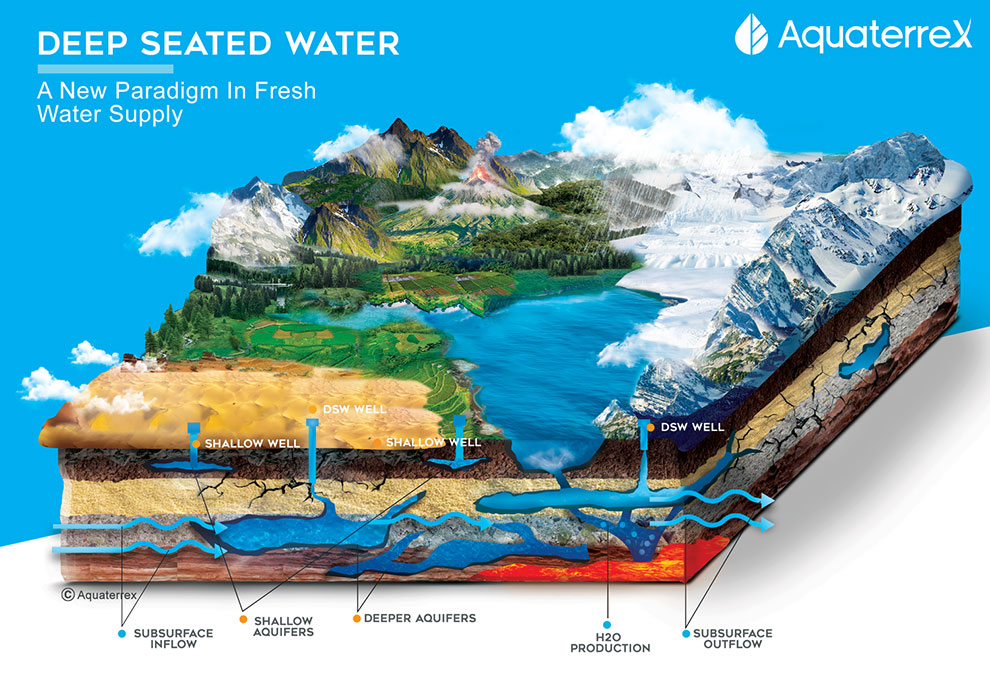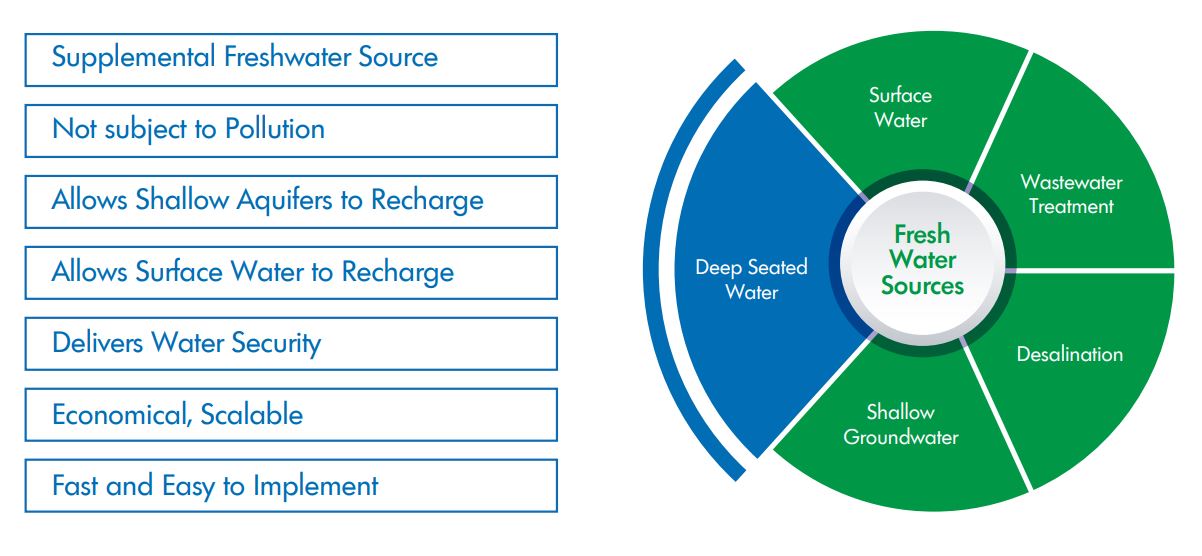
Data Centers and Chip Makers that Control the Internet Are Facing a Water Crisis
There are approximately 1,800 data centers in the US that house the computers that feed the Internet and power business computing across the nation. This is a linchpin of the economy. A little-known fact is that these data centers generate huge amounts of heat due to the massive amounts of power consumed. Thus, water becomes a critical element in the cooling systems that keep the centers operating. An average data center can use 300,000 gallons of water a day to cool the facility – the same amount used by 100,000 homes according to researchers at Virginia Tech.
But that pales in comparison to semiconductor manufacturing, which averages 2,000,000 to 4,000,000 gallons per day, according to Sustainalytics. And tech companies are aggressively expanding chip manufacturing in the U.S.
With the ongoing drought covering half of the United States, a crisis is brewing. Many tech companies have built massive facilities in the drought areas of the West, due to demand and a lower cost of operation in the desert areas of California, Arizona, Nevada, and other states. States eager to gain employment and tax revenue have welcomed these cash-rich companies with open arms, but with what some consider less regard for the “downstream” effects of water usage.
Certain actions can help reduce water consumption, such as lowering the relative humidity in a data center as Meta is doing, but many of these actions are a drop in the bucket when compared to overall use. Drought risk to data centers
A Growing Need For a Supplemental Source of Water
Water supplies are being tapped out while the need for growth remains. That’s why a supplemental source of fresh water is desperately needed in many areas. Fortunately, a vast supply of water is available and economically accessible.
Deep Seated Water – An Almost Unlimited, Supplemental Source of Fresh Water
Deep Seated Water (DSW), is groundwater, typically sourced from deep aquifers that are located lower than shallow aquifers. Such deep aquifers are supplied not only from local catchment basins but also by subsurface inflows across basin boundaries. Deep Seated Water also encompasses water created at the mantle level of the Earth under extreme heat and pressure as confirmed by this recent report on mantle rain. Contamination does not occur in these deep water aquifers as modern pollution has not reached these deeper levels. And the best news is that this water is accessible and plentiful.
A Vast, Available, and Economically Accessible Water Supply
A vast ocean of fresh water exists right below our feet. It can be tapped economically and quickly. It has been overlooked by hydrogeologists and other experts due to assumptions made decades ago. However, with 21st century technology this vast ocean of water can be located and brought to the surface within weeks. The US National Groundwater Association estimates there is 6,000 years of freshwater supply in the upper two kilometers of the earth’s crust Nature Geoscience article. AquaterreX has developed the ability to locate and economically bring to the surface these previously untapped water resources.
An example of huge new sources of fresh groundwater being discovered came just a few months ago in Texas. The newly named Maverick Basin Aquifer is known to be at least 3,000 square miles and averages 1,000 feet thick in most places. This comes years after Texas water experts concluded their deeper aquifers are brackish (salty) at best. Water tests on this new aquifer show it comes out of the ground already meeting or exceeding federal and state drinking water standards! Deep aquifer (texas.gov) These discoveries fly in the face of the commonly accepted beliefs of most hydrogeology professionals.
AquaterreX has been at the forefront of this effort, employing 21st century technology to locate Deep Seated Water.
The Missing Piece That Can Solve the Water Crisis Puzzle
Deep Seated Water is the Missing Piece that can solve the water crisis puzzle – contamination, drought, scarcity. Many water strategies focus on conservation, rather than additional supply. Other solutions such as desalination and wastewater treatment are potential answers for some, but they also come with trade-offs such as high cost, high energy usage, long planning periods and toxic waste. Deep Seated Water is located almost everywhere on the planet and it can be added to the mix of solutions as a supplemental freshwater source that is not subject to contamination, is fast and easy to implement and is economical and scalable. And, tapping Deep Seated Water allows both surface water and shallow aquifer sources to recharge, making the total system more environmentally sustainable.
We Can Solve The Water Problem
There is no question that we are facing freshwater challenges around the world. It is time to consider all of the alternatives and solutions at our disposal. Science and technology are advancing to the point where we can make a difference quickly, if we just resolve to do it.
About AquaterreX
AquaterreX (www.aquaterrex.com) is a global environmental services organization with a mission to broadly implement effective water and food security solutions. AquaterreX maintains offices in Florida, California and Australia, and has representation in the United Arab Emirates.
The name AquaterreX comes from the Latin, aqua (water) and French, terre (earth, land) which is a derivative of the Latin, terra, and “X” for exploration. Thus, AquaterreX encompasses water and land solutions for the planet.
The company possesses proprietary technology to locate Deep Seated Water, which is fresh water situated below the shallow groundwater that supplies the majority of fresh water on the planet. This vast new source of water can help solve the water crisis facing billions of people.

